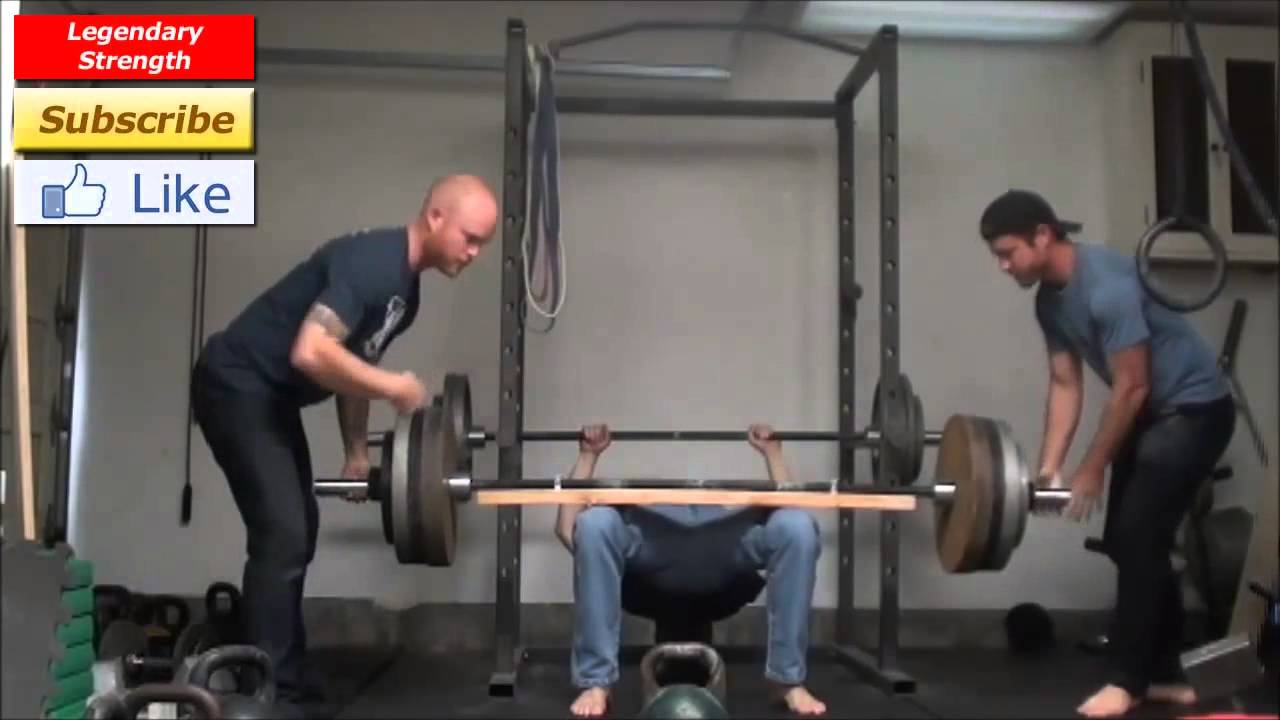Recently a customer asked about bridging and after searching I realized I didn’t have a good article simply covering the basics. This one covers the wrestler’s bridge and a future article will go into the gymnast or hand bridge.
The wrestler’s bridge is by no means a new exercise. It has been around for many years and is still commonly used by wrestlers.
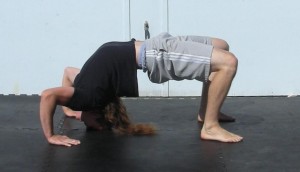
It functions primarily as a neck and back exercise, though it works the entire body. The legs must be strong and stable (and if you doubt this fact just try bridging after doing a set of squats). By bridging, the spine is made more flexible and stronger at the same time. The same goes for the neck.
While most people train in one way or another, I’d say 90% do zero direct neck work (though I realize that number will be dramatically less among my readers). Why so little neck work? The neck holds up the head and it houses the cervical vertebrae. It is one of the most important areas of the body, yet few trainees make it stronger? A travesty. The neck has muscles like any other part of the body, so you can make it stronger. After all, you could do without your legs or your arms, but you can’t do without your neck.
The problem is many people are afraid of hurting their neck. With smart training, and going into it slowly, this chance can be drastically minimized. In fact, as I describe here, bridging work may have saved my life.
How to do a Wrestler’s Bridge
Enough of an intro, let’s get into the details of doing the wrestler’s bridge. When you first start out you’ll be using your hands to support your weight and for spotting yourself. As you progress, you can do away with using your hands for support, and they will be free to hold extra weight as you progress.
Lay on your back with your knees bent. Your feet should be within a couple inches of your rear end. Place your hands to the sides of your head with the palms flat on the ground. Pushing up with your arms and legs you’ll roll to the top of your head. This should not be difficult to do.
Below you can see a top of the head position, without the hands, but up on the toes so less flexibility is needed.
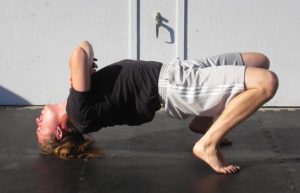
Improving Flexibility
From here, you have a couple options. In order to improve your flexibility, you can work towards your nose. The best way to do this is to rock back and forth and think of extending your chest over your head. You want to think of extending your spine in all bridging movements, rather than just bending over it. Ease into this slowly and safely
Also going onto the toes, rather than the heels, gives you a couple more inches in which to stretch.
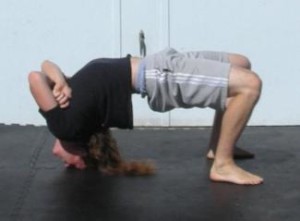
Wrestler’s Bridge for Time
Holding a bridge for time is an excellent way to get started. Whether on the top of your head, or on your forehead, work up to one minute, then two, and then three. A three minute no hand support wrestler’s bridge was the gold standard that Matt Furey recommended in Combat Conditioning.
Up the Intensity
When bridging with your hands becomes easy, slowly remove them so your weight is only supported by the head and feet. My personal best is ten minutes, though I got bored with going so long, and I sought other ways to make this exercise more effective.
That’s when I began adding weight. As bridging became one of my signature feats of strength I was doing it in different shows I performed.
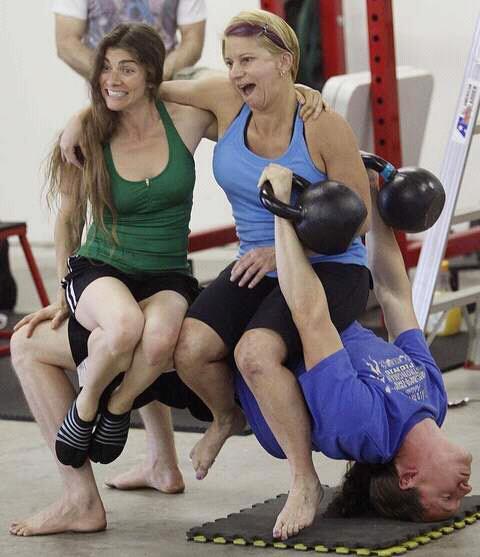
This picture ended up on the front page of a section of the Tallahassee newspaper
And kept adding more and more until eventually I could handle half a ton. Note that this is far from the basics covered here! This was performed after working on the basics of the wrestling bridge for close to ten years!.
How to Train the Wrestler’s Bridge
When you’re starting out I recommend doing a few sets to groove in the movement and get used to it. But, once you have some proficiency I’ve found that doing a single set of regular bridging, followed by a variation of the front bridge, pictured below, to be enough to get the desired benefits.
This can be done from one to three times per week. My personal bridging workouts tend to be as simple as this.
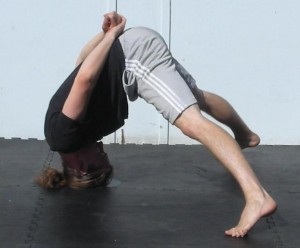
Want More Bridging?
There are many other exercises in bridging. This article hasn’t even mentioned the hand or gymnastic bridge, which if you really want to push spinal strength and flexibility is a must.
Or the dynamic bridging movements, like falling into the bridge or kicking over. All of these and much more can be found in the Advanced Bridging Course available here.
You can also find just the bridging book on Amazon here.
Here’s a small sampling of some of the dynamic wrestler’s bridge exercises you can do.
Don’t be like the majority of others who neglect to train their neck. A little bridging work can work wonders. If you’ve never experienced the wrestler’s bridge you can start today.

